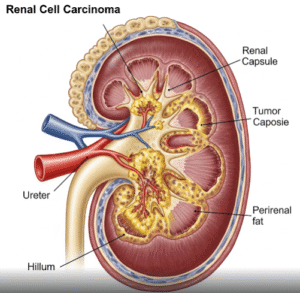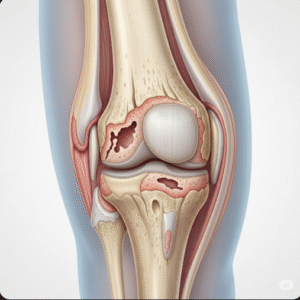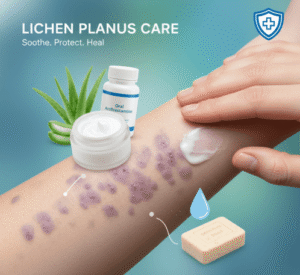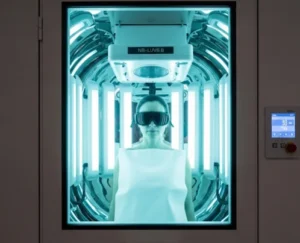Overview
Cold hands is a common symptom where the hands feel unusually cold, numb, or icy, often accompanied by paleness or tingling. While occasionally a minor issue related to environmental temperature, persistent cold hands may signal circulatory problems, nerve disorders, or systemic health conditions.
In South Korea, vascular clinics, neurology departments, and general hospitals provide comprehensive evaluation and treatment for cold hands, combining diagnostic tests, lifestyle guidance, and medical interventions to address underlying causes and improve circulation.
Key Facts
Highlights:
➡️ Cold hands may be temporary (due to cold exposure) or chronic, lasting months or years.
➡️ Common causes include poor circulation, peripheral vascular disease, Raynaud’s phenomenon, anemia, and hypothyroidism.
➡️ Associated symptoms can include numbness, tingling, color changes (white, blue, or red), and pain.
➡️ Early assessment helps identify potentially serious conditions like vascular disorders or autoimmune diseases.
➡️ South Korea offers specialized vascular and endocrine care, including advanced diagnostics and personalized treatment plans.
What is Cold Hands?
Cold hands is a symptom characterized by reduced warmth, numbness, or a chilling sensation in the hands, sometimes accompanied by color changes or discomfort.
Key characteristics:
- Temperature Sensation: Hands feel cold even in a normal ambient temperature
- Color Changes: Pale, blue (cyanosis), or red after cold exposure or stress
- Associated Sensations: Tingling, numbness, or mild pain
- Duration: May be temporary, triggered by cold, or persistent, indicating underlying medical conditions
Cold hands are often a sign of circulatory or nerve dysfunction rather than a disease by themselves.
What Symptoms are Related to Cold Hands?
Symptoms commonly accompanying cold hands include:
- Tingling or “pins and needles” sensation
- Numbness or reduced dexterity
- Color changes in fingers (white, blue, then red)
- Pain or discomfort in fingers
- Clubbing or brittle nails in chronic cases
- Other systemic symptoms like fatigue or dizziness if related to anemia or hypothyroidism
Highlights:
➡️ Symptoms may interfere with daily activities, especially fine motor tasks.
➡️ Persistent cold hands can indicate vascular, neurological, or endocrine problems.
➡️ Early evaluation allows diagnosis and prevention of complications like tissue damage.
What Causes / Possible Causes of Cold Hands?
Highlights:
➡️ Raynaud’s Phenomenon: Exaggerated response to cold or stress, causing temporary color changes and numbness.
➡️ Peripheral Vascular Disease: Narrowing or blockage of blood vessels reduces circulation to hands.
➡️ Anemia: Low red blood cell count reduces oxygen delivery, leading to cold extremities.
➡️ Hypothyroidism: Low thyroid hormone slows metabolism, contributing to cold hands.
➡️ Diabetes: Peripheral neuropathy can cause reduced warmth and sensation in hands.
➡️ Nerve Compression or Injury: Cervical spine disorders, carpal tunnel syndrome, or peripheral nerve injuries can reduce warmth and sensation.
➡️ Lifestyle Factors: Smoking, prolonged cold exposure, and sedentary habits reduce blood flow.
➡️ Mechanism: Cold hands occur due to reduced blood flow, nerve dysfunction, or metabolic disturbances affecting temperature regulation in the extremities.
When Should I See My Doctor?
Highlights:
➡️ If cold hands are persistent or worsening, not just triggered by cold weather.
➡️ If accompanied by pain, numbness, color changes, or ulcers on fingers.
➡️ If associated with systemic symptoms such as fatigue, dizziness, or weight changes.
➡️ For patients with diabetes, vascular disease, or autoimmune conditions, early assessment is crucial.
➡️ Prompt evaluation ensures early detection of circulatory, endocrine, or neurological disorders and prevents complications like tissue damage.
Care and Treatment
Treatment focuses on improving circulation, managing underlying conditions, and relieving symptoms:
Highlights:
➡️ Lifestyle Measures:
- Keep hands warm with gloves or hand warmers
- Avoid smoking and cold exposure
- Regular exercise to improve circulation
➡️ Medications:
- Vasodilators or calcium channel blockers for Raynaud’s phenomenon
- Treatment for anemia (iron supplements) or hypothyroidism (thyroid hormone replacement)
- Medications for peripheral vascular disease or diabetes as needed
➡️ Physical Therapy:
- Hand exercises to improve blood flow and dexterity
- Biofeedback for stress-related triggers
➡️ Surgical or Interventional Options:
- Rarely, sympathectomy for severe Raynaud’s resistant to medication
- Vascular interventions for peripheral artery disease
➡️ Monitoring: Regular follow-up to track symptoms, vascular health, and underlying conditions.
Treatment Options in Korea
South Korea provides advanced care for patients with cold hands, including:
Highlights:
➡️ Vascular Clinics: Comprehensive assessment using Doppler studies, angiography, and blood tests.
➡️ Endocrinology Departments: Evaluation and treatment of thyroid disorders, diabetes, or metabolic causes.
➡️ Multidisciplinary Care: Collaboration among vascular surgeons, neurologists, and endocrinologists.
➡️ Advanced Therapeutics: Medication management, minimally invasive vascular procedures, and targeted therapy for Raynaud’s or nerve-related issues.
➡️ Medical Tourism Support: Multilingual consultations, diagnostics, and personalized treatment plans for international patients.
➡️ Preventive Guidance: Lifestyle counseling, temperature management, and exercises to maintain hand warmth and circulation.













